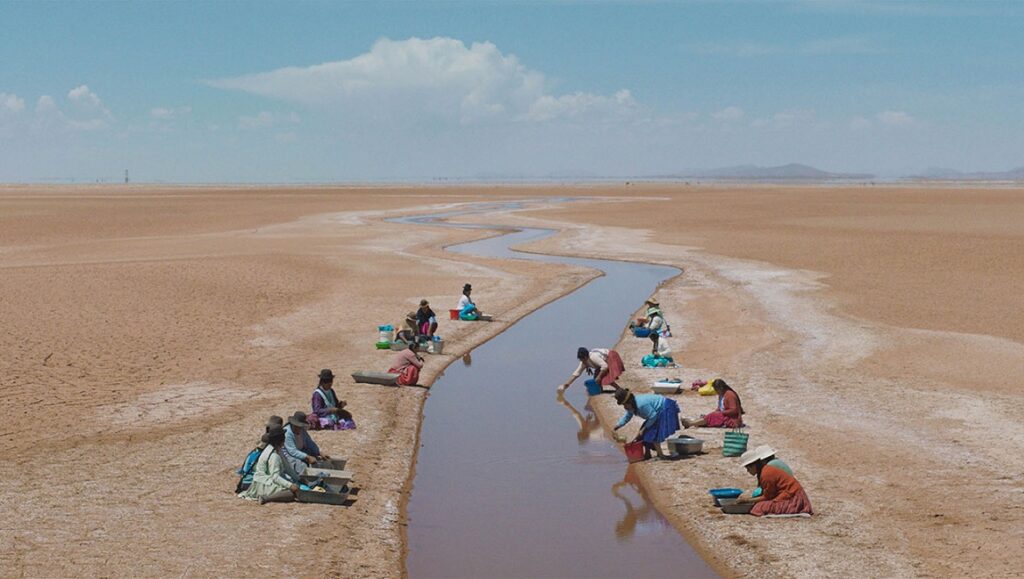Utama is undeniably one of the year’s most gorgeous works of image-making, but its narrative and thematic expressions are less consistently impressive.
Over the past two years, audiences have been forced to more comprehensively acclimate to the TV screen viewing experience. Living through the golden age of prestige television and under the monolithic influence of all-pervading streaming platforms means viewers were already fairly deep down this particular rabbit hole, but with theater closures and companies shifting blockbuster properties to their digital distribution hubs across 2020-2021, the home-viewing conditioning took further root. Theater purists are likely to find no consolation in this trend — and not for nothing — but given a decent home theater rig, your average movie-watcher watching your average movie is going to be just fine; if you’re concerned with seeing the latest digital Marvel smear on the biggest screen possible, that’s more about the experience than concern for the preservation of artistic intent.
And then there are films like Utama, which practically begs for theatrical exhibition when viewed within the constraints of a virtual festival bow. Alejandro Loayza Grisi’s debut feature is one that thrives according to its singularly cinematic qualities — not that there is a comprehensive definition of what exactly constitutes cinematic, but in this case it’s the striking, immersive compositions put to screen. Playing out against the rugged beauty of its Bolivian Altiplano setting, Utama’s narrative framework is appropriately simple, the better to allow its visual character to assert itself. Grisi understands the easy splendor of his location, and counters its immensity with a fine precision. His compositions befit the locale, set with a clean linearity, reveling in horizon lines of cracked plateau meeting clear sky, and the director splashes his scenes with swaths of color: pastel clothing against the parched, ochre land, all-white llamas trotting dusty earth while bedecked with hot pink ribbons on their ears. It’s vivid, picturesque image-making, thoughtfully entering into a kind of dialogue with the terrain and supplementing its natural beauty with subtle, intelligent flourish, postcard-worthy without emptily relying on the Altiplano’s spectacle.
Utama’s thematic and narrative expressions, unfortunately, are less consistently impressive. The film’s spare storyline follows an elderly Quechua couple, Virginio and Sisa, as they endeavor in their spartan, subsistence existence of animal husbandry and daily routine. Opening as the existential threat of drought is becoming unignorable, their estranged grandson, Clever, soon arrives from the city, seeking to convince the elderly couple to forsake their traditional, hardscrabble living and return with him. Virginio is skeptical, embittered toward those who have left (including his son, Clever’s father), resolute in his determination to live and die of his own volition, and nursing an increasingly grievous cough. From here, the film initiates a number of compelling studies: the merits of survival in the absence of beauty, the fundamental unknowability of others, the value of progress on a dying planet. But while Grisi smartly contains his film to mostly physical, visceral spheres, largely eschewing unnecessary dialogue and keeping to the quotidian, Utama ultimately relies on too familiar tensions — tradition vs. modernity, pride vs. destruction, stewardship vs. conquest. It results in a film that feels exsanguinated, its human interest too beholden to a familiar slow cinema template, all of it consistently buffeted by the gentle grandeur of the film’s visuals across its runtime. Utama occasionally upsets this distancing effect — a late moment that finds one character shifting his gaze between an old photograph of a youthful man and that same individual’s now deceased body in repose is especially moving in the haunting interiority it suggests — but there’s too little of the like to fully course correct the film. Still, Grisi has here delivered one of the more visually impressive recent debuts, and if his handle of story and character does not yet match his quality of craft elsewhere, he’s put plenty enough to screen to make it worth seeing where he goes next.
Originally published as part of Sundance Film Festival 2022 — Dispatch 1.


Comments are closed.